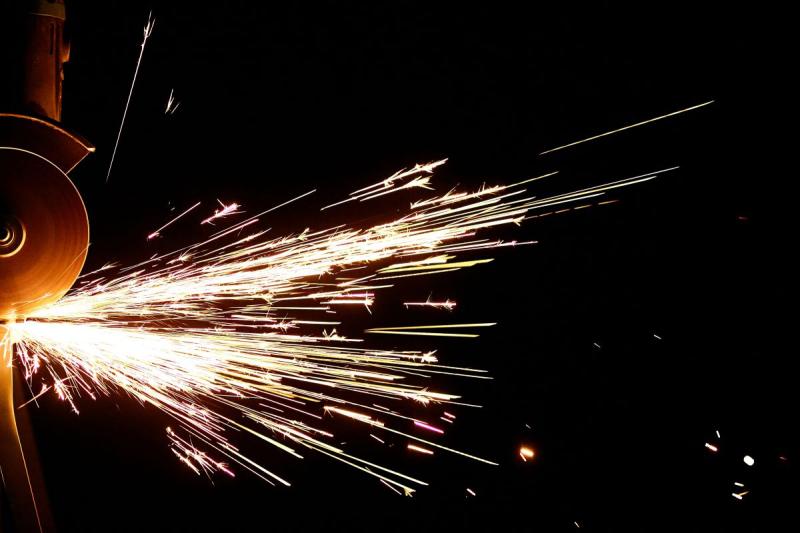Are robotic grinding solutions worth it? What are the benefits for both manufacturers and consumers?
Automation - which was once viewed as a niche or unconventional concept - is now a truth that many industries have to accept. Ductile iron casting is no exception. Many people in the industry would not be shy to tell you that robotic grinders are the future (and that the future is now).
But is this actually true? Can automated robotic grinding and polishing really produce identical - or better - results than manual grinding solutions?
Well, the reality is that if we take a look at the foundry industry as a whole, a combination of automated and human labor is actually the most efficient way forward. There will always be a need for human participation or oversight at the foundry. Given the inherent costs and liabilities at hand, however, the addition of automation is undeniably a net positive. It is clear to see that automation helps to cut down on arduous and dangerous labor inputs and, in turn, leads to an overall increase in accuracy, productivity, and precision.
This is why Urick has made it our goal to continuously adopt practical automation solutions into our finishing department.
Part Finishing: Getting Rid of the Unwanted Leftovers
As the name would suggest, "part finishing" (in regard to ductile iron casting) is the last major process that needs to take place before products are ready for consumers.
In most cases, this means taking the cooled, molded cast assemblies that have been created and then preparing them for conventional use. There are a variety of finishing techniques that can be applied throughout the industry, depending on the type of metal cast and also the process that has been used to cast it.
The in-house part-finishing department at Urick Foundry primarily utilizes robotic grinders and continuous shot-blast machines, as well as an assortment of other trimming equipment.
In general, when it comes to the finishing process, the first major step is to cut the casting from the tree assembly that it was cast with. Any risers that are present are removed in the next step by either cutting or by blunt force (basic tools for this include the sledgehammer).
Afterwards, several stages of grinding are implemented - from coarse to fine - with more grinding stages being utilized depending on the casting finish quality.
Taking A Closer Look: Manual Grinding vs. Automated Robotic Grinding
Although we use the term "manual grinding" in the industry to describe certain processes, there are a wide array of machines involved, including:
- Hand grinders
- Bench grinders
- Hand-guided double-grinding machines
- Surface belt sanders/grinders
These pieces of equipment all require a significant amount of human influence and interaction to perform their job — hence why they fall under the umbrella of "manual grinding". None of them could ever be classified as a grinding robot or a robot grinding machine … at least not in any serious context.
You can't just put a casting on top of them, turn them on, and then expect them to get to work — human hands need to be involved in every step of the process when it comes to manual grinding equipment.
Even in this highly modernized day and age, manual grinding is still a viable option. In most cases, manual grinding equipment will get the job done and leave you with a satisfactory final product. However, when compared to robotic grinding, there are several notable instances and conditions in which where manual grinding is less than ideal.
The case for robotic grinding
Two of the significant aspects where robotic grinding excels in comparison to manual grinding are accuracy and precision. No matter how skilled a human may be, if they are utilizing manual grinding equipment, they will never be able to cut or grind as precisely as a robotic grinder — simply never.
On top of this, robotic grinders are capable of productivity levels that are unmatched by humans. They are able to carry out their tasks at high and consistent speeds for extended periods of time, without sacrificing the overall accuracy of the final product.
Grinding is also an inherently dangerous process, due to the use of metal implements and blades that are moving at incredibly fast speeds (among other reasons). Although virtually all contemporary manual grinding machines have some level of built-in safety features, using them on a day-to-day basis still comes with a great deal of risk.
On the flip side of this, since robotic grinders take humans out of the more involved steps in the grinding process, it has been shown that they dramatically improve worker safety.
Robotic Grinding Machine Operation — Robotic Arms Meet Human Intuition
Although robotic grinders can be fairly large (when you consider them in their entirety) it is actually only ever one or two main points of contact that interact with the casting. This part of robotic grinders that engages and manipulates the castings is referred to as the "end of arm tooling."
As the name suggests, these grinders (or other types of tools) are positioned at the end of a robotic arm (or arm-like attachment). It is these robotic arms that are largely responsible for shouldering the burden of making sure that the aforementioned desired precision, speed, and accuracy are all maintained.
This is what makes these automatic robotic grinders so effective in achieving the near-net shape parts that Urick is famous for. We must still emphasize, though, that a lot of the credit needs to be focused on the human programmers and operators that make this achievement possible.
The programming and operation of robotic grinders are fairly hands-off processes but they oftentimes still end up being more complex than other applications in a foundry (or similar industry) setting.
The reason for this is that the operators and programmers need to consider a seemingly infinite amount of variables before any grinding even takes place. This is because grinding robots don't have the inherent human intuition that would otherwise allow them to make snap decisions on the fly when circumstances change or factors fluctuate.
Thankfully, Urick's team of human robotics operators excel at performing daunting tasks such as these. And, it's all due to their extensive history in the industry and the wide array of engineering and mechanical skills that they have acquired over the years.
Doing Our Part At Urick Foundry
Here at Urick, our world-class staff, equipment, and processes make us a standout in the ductile casting industry. Both halves of our team — the highly-skilled workers and the high-quality robotic grinders — work in tandem to make sure that your parts are as close to spec as is humanly and robotically possible.
Don't wait, contact us today to get a quote and let our world-class team get started on your project today!



